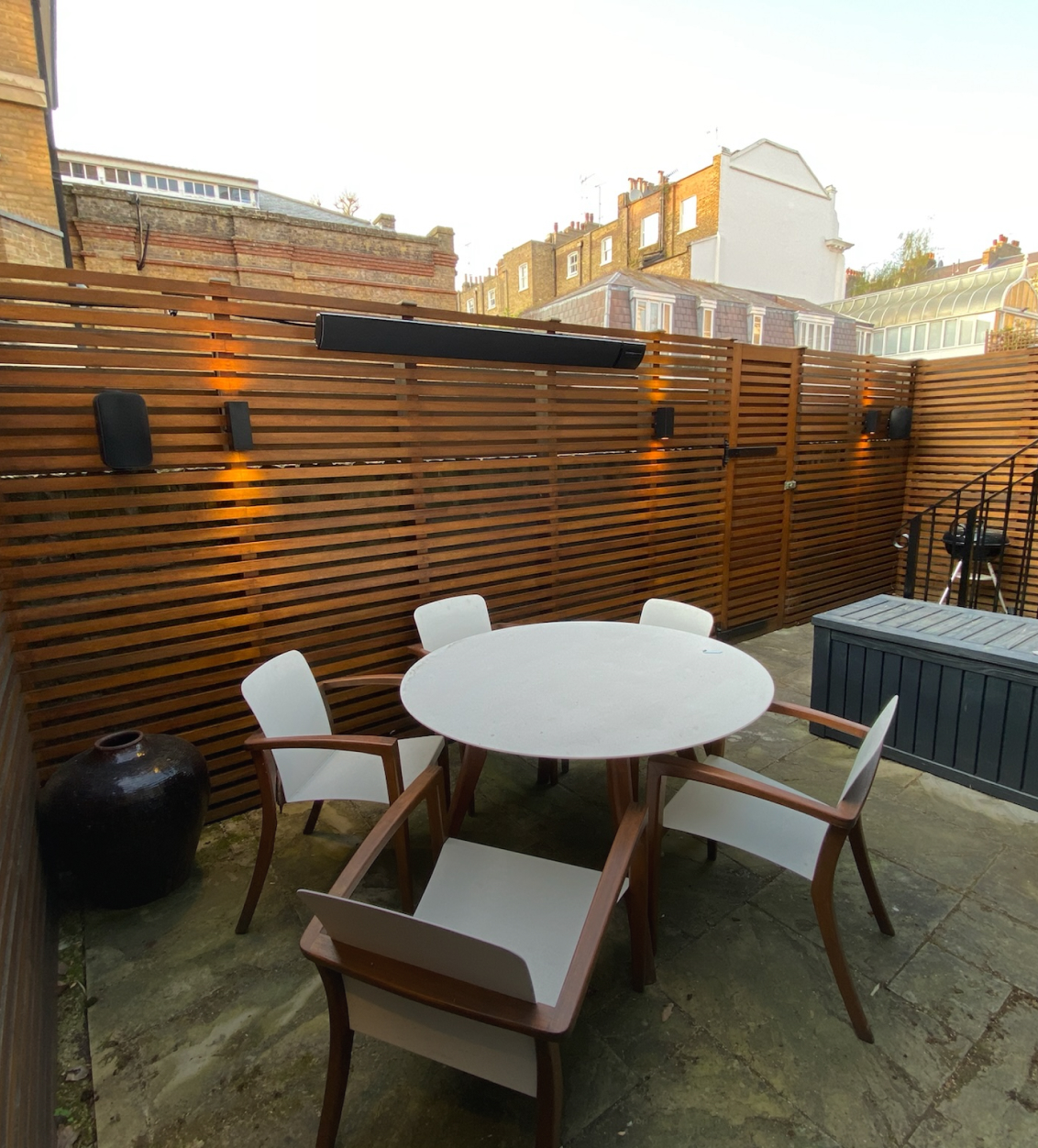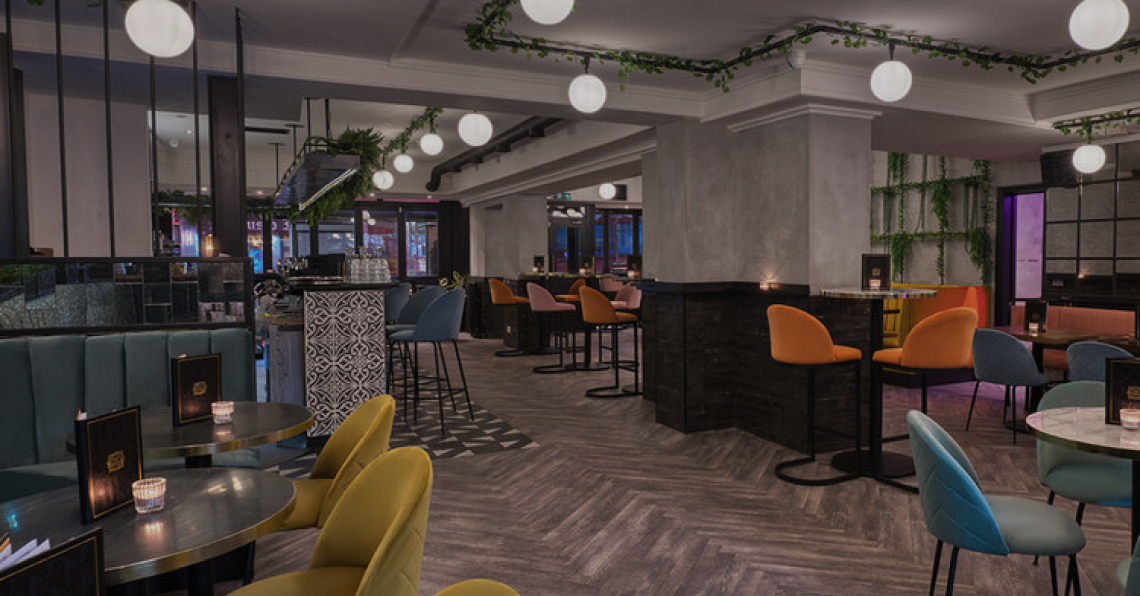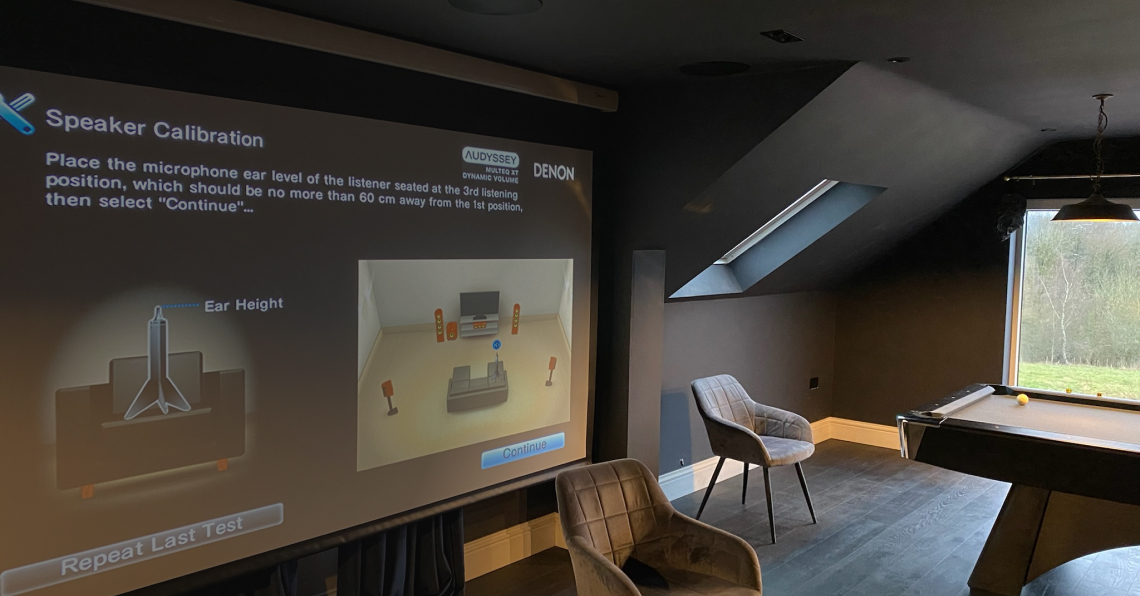How to Design a Home AV System That Works for Every Room
A multi-room AV system provides a unified way to enjoy high-quality audio and video across your entire home.
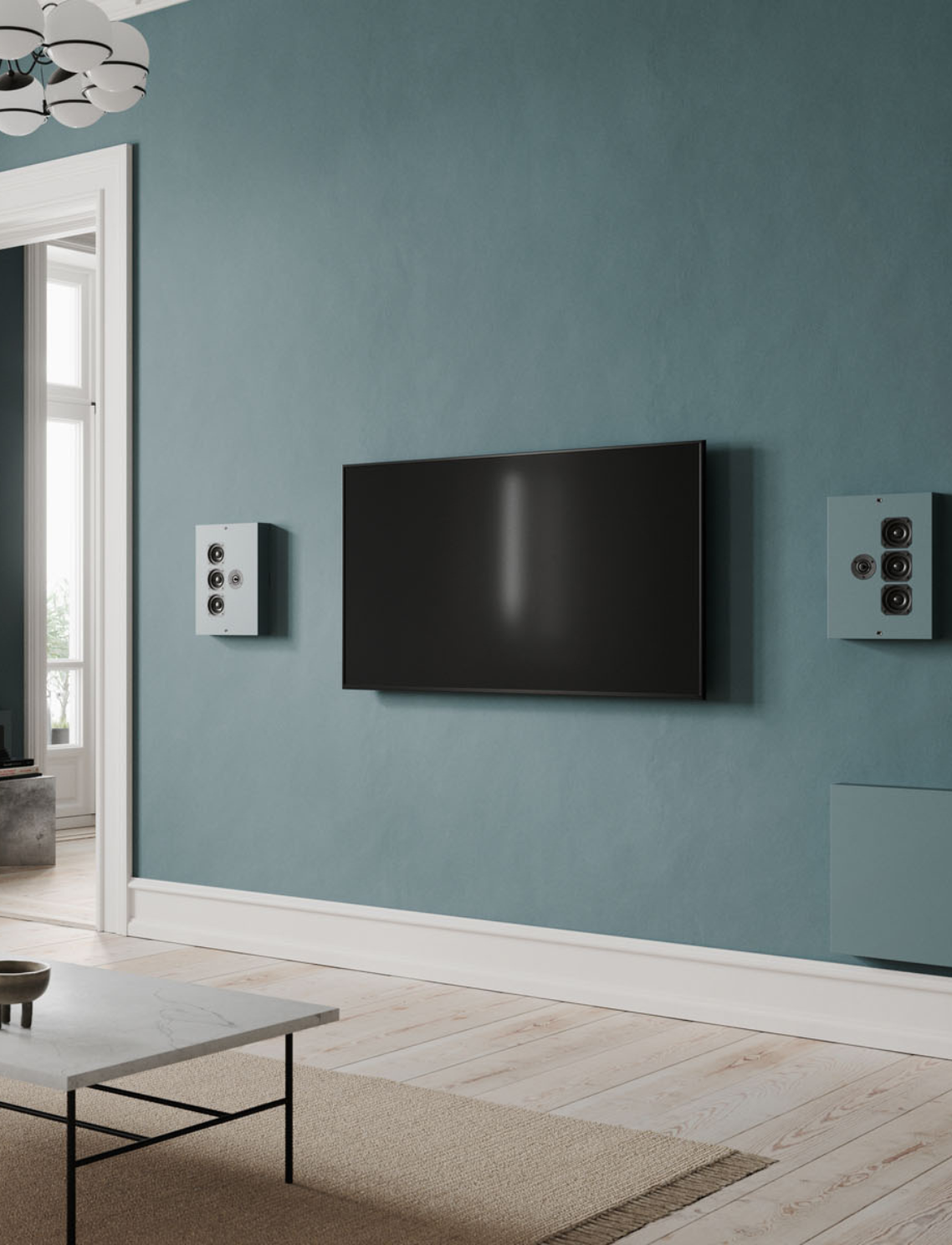
This is achieved by placing speakers and displays in multiple rooms and connecting them either through a central Audio/Video Receiver (AVR) or by using network-based software platforms.
Both wired and wireless options are available, each offering different advantages depending on the layout of the property and the desired performance.
Modern AVRs are often equipped with multi-zone capabilities, allowing you to route separate audio and video signals to different areas of the home from a single point of control.
This means one room can stream music while another plays a film, or several spaces can share the same source in perfect sync. These systems are flexible and highly customisable, which makes them suitable for a wide range of homes and lifestyles.
Designing a system that performs well in every room starts with planning. Identifying how each space will be used, choosing compatible components, and ensuring proper infrastructure for connectivity are essential steps in avoiding common issues later.
A good system should not only sound and look excellent but also be easy to use, scalable, and built with long-term reliability in mind.
By combining thoughtful design with the right equipment and a well-structured control system, you can achieve consistent, high-quality playback across your home without added complexity.
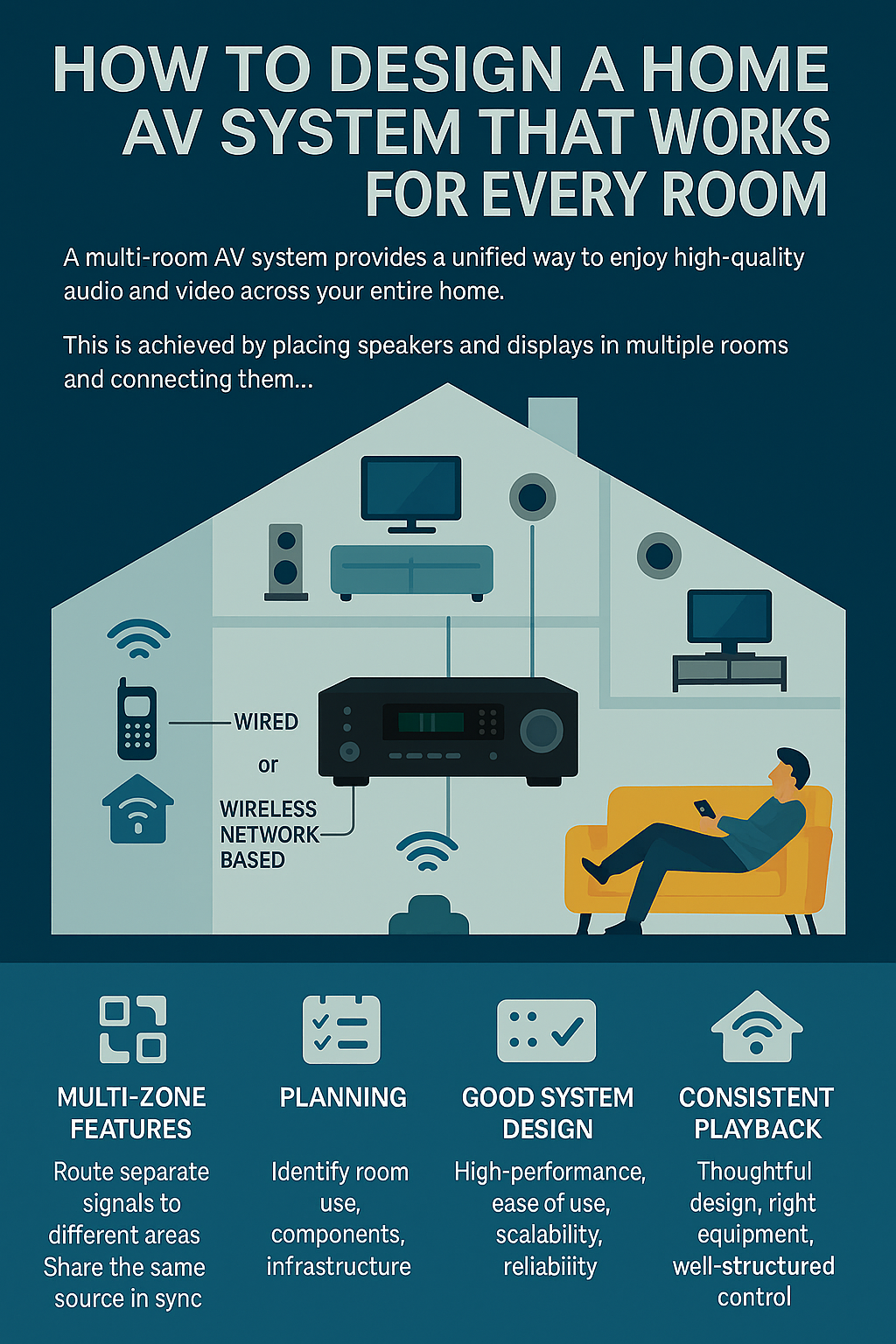
Understanding the Fundamentals of Multi-Room AV
At its core, a multi-room AV system allows different areas of your home to access and control audio or video from shared or separate sources.
This setup can be used to play identical content in multiple spaces or create distinct experiences in each room. For example, background music in the kitchen, a podcast in the study, and surround sound for a film in the lounge can all be managed from one system.
These systems can be implemented using traditional wired solutions, where all speakers and screens are physically connected to a central AVR or matrix switch.
Start With a Clear and Scalable Design
Every successful multi-room AV system begins with a well-considered plan. This includes mapping out where content will be played, how users will control it, and how the system can evolve with future needs.
Understanding the use of each room is essential. A family room may require immersive surround sound and integrated lighting control.
Bedrooms might only need subtle audio with simple controls. Bathrooms and outdoor zones have specific requirements such as moisture-resistant speakers and robust networking.
Scalability should also be part of the design conversation. Even if you begin with three or four zones, laying the right infrastructure makes it easier to add more later.
Using structured cabling, centralised distribution, and expandable control platforms helps keep the system adaptable.
Choosing Equipment That Matches Each Space
The performance of a multi-room system depends heavily on choosing the right equipment for each environment. Not all rooms need the same level of audio output or speaker type, and the wrong setup can lead to poor results.
For example, ceiling speakers work well in kitchens, bathrooms, and corridors where space is limited and background music is preferred. In lounges or media rooms, freestanding or in-wall speakers may be combined with subwoofers and AVRs to deliver a more immersive experience.
Speaker placement matters. Poor positioning can create dead zones or uneven sound. Equipment should be selected not just for quality but also for compatibility with amplifiers and the control system. Every speaker, cable, and display should form part of a cohesive ecosystem.
When choosing displays, consider both size and placement. Some rooms may require fixed TVs, while others might benefit from retractable projectors or motorised mounts. If aesthetics are important, in-wall cable routing and discreet mounts can keep the installation neat and unobtrusive.
Synchronisation and Independent Zone Control
A good AV system lets you control what plays where without delay or confusion. In many homes, you’ll want the ability to link zones together or control them separately. This requires both proper hardware and thoughtful system programming.
AVRs with multi-zone functionality or matrix switches are typically used to route signals from shared sources to different rooms. These allow you to listen to music in one zone while another is watching a film, without interference or lag. Careful planning ensures audio remains synchronised in shared zones, especially when multiple rooms are playing the same content.
Software platforms provide options for grouping zones and managing them dynamically. You can play music across the kitchen, dining room, and garden during a gathering, then switch to individual control when needed. This flexibility is part of what makes multi-room systems so useful in day-to-day life.
Controlling the System Should Be Easy
For all its complexity behind the scenes, a home AV system should be easy to operate. Whether through an app, a handheld remote, or an in-wall touchscreen, control should feel intuitive and responsive.
Systems like Control4 allow users to manage zones, volume, sources, and playlists from a single interface. These platforms also integrate with lighting, climate, and security controls, offering a consistent user experience across the entire home.
It’s important to consider who will be using the system. A good setup allows anyone in the household to use it without needing a tutorial. Simple, well-labelled controls and presets make daily use smooth and stress-free.
Managing Acoustics Across Different Rooms
Acoustic conditions vary across rooms. The size, shape, ceiling height, and materials in each space all influence how sound behaves. To maintain quality across the home, it’s important to account for these differences during the design stage.
Hard surfaces like glass and tile can cause sound reflections, while soft furnishings absorb high frequencies. In large or open-plan rooms, more powerful speakers may be needed to maintain clarity. Smaller rooms may require different speaker placement or acoustic treatment to avoid echo or distortion.
Working with a professional who understands these factors allows for more precise speaker placement and calibration. The result is balanced sound in every zone, regardless of the room’s layout or use.
Design Integration and Discreet Installation
One of the most common concerns with AV systems is how they look once installed. A thoughtfully designed system integrates with your interiors without dominating them. In many cases, speakers and screens can be flush-mounted, painted to match walls, or hidden in cabinetry.
Centralising equipment in a dedicated rack or utility area reduces clutter in individual rooms. Using wall plates, cable management, and recessed fittings keeps things tidy. Projectors, TVs, and even entire speaker systems can be concealed using motorised lifts or architectural features.
If you’re working with an architect or interior designer, it’s best to bring AV planning into the early stages of the project. This ensures power, data, and cable routes are accounted for before finishes are applied.
Professional Installation and Support
A home AV system involves multiple disciplines: electrical work, networking, control system programming, and acoustic planning. It also requires careful coordination with other home technologies such as lighting, shading, and heating systems.
Professional installers manage the entire process, from initial consultation and system design through to installation, setup, and testing. They also provide handover support, showing you how to use the system and fine-tuning it to suit your preferences.
Ongoing support is equally important. Whether you need system updates, help with new devices, or maintenance over time, having a local and reliable installer makes ownership easier. For homeowners, experienced AV installers ensures your system is tailored to your property and lifestyle from day one.
A System That Works Seamlessly, Room by Room
A properly designed home AV system delivers more than just entertainment. It adds comfort, convenience, and flexibility to everyday living. Whether you’re listening to music throughout the house, enjoying a film in one room, or controlling it all from a single device, the right setup makes it effortless.
The key lies in thoughtful planning, careful equipment selection, and installation that respects both the technical and design requirements of your home. With the right guidance, you can create a system that works reliably across every room without overcomplication.
If you are exploring a new installation or expanding an existing setup, Carbon Integration offers expert design, installation, and support tailored to premium homes in London and Berkshire. Their projects are built around real usage, not generic solutions, ensuring every detail functions just as it should from the very start.
Frequently Asked Questions
A multi-room AV system allows you to distribute audio and video content to different areas of your home. Each room, or “zone”, can either share content from the same source or operate independently, depending on your preferences and setup.
Wired systems provide the most reliable performance, especially for high-quality audio and video. However, many modern systems can also use wireless platforms or a hybrid of both, depending on the property layout and requirements.
Yes. Most systems allow you to control each zone separately or group them together. You can adjust volume, playback, and source selection per room using a central app, remote, or wall-mounted controller.
Typical components include an AV receiver or matrix switch, speakers tailored to each room, display screens or projectors, and a control system like Control4 for easy operation. The exact setup depends on the number of zones and performance expectations.
Using centralised distribution and AVRs with multi-zone support helps maintain synchronisation. Proper signal routing, buffering, and system configuration ensure that audio stays aligned when the same content plays across multiple rooms.
Each room’s size, shape, and surface materials affect sound. Ceiling speakers work well in smaller or shared spaces, while wall-mounted or freestanding speakers may be better in media rooms. Placement should be planned to reduce echo, overlap, and dead zones.
Many AV systems integrate with lighting, blinds, heating, and security. Control4 and similar platforms allow you to build scenes and routines that manage multiple elements together.
Professional installation ensures your system is designed properly, installed neatly, and configured for optimal performance. It also provides access to long-term support and expert guidance as your system grows.

Smart Home Systems Installer
From consultation to specification, we will manage and complete your smart home installation projects.
Our Head Office is based in Uxbridge (West London) within Greater London but we can cover any area in the UK. We also have a smart home showroom in Sunningdale, Berkshire to showcase our system integrations.
If you want to have a chat about Control4 vs Lutron, please call us on 0207 190 9552 or e-mail us on via our contact form.
Partners












Projects
We'd Love to Hear from You!
Discover the ways in which we can streamline and automate your home for enhanced convenience and efficiency.

